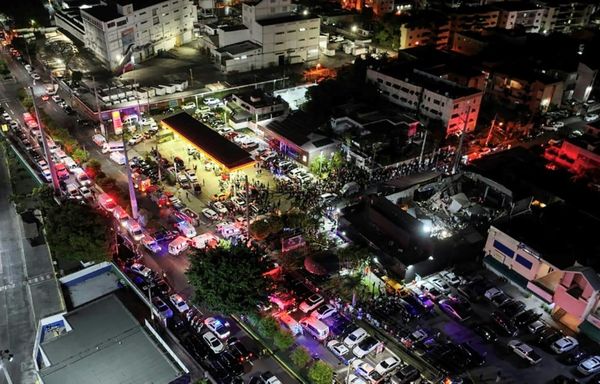
The US supreme court appeared sharply divided on Monday on whether it should strike down Louisiana’s congressional map because the state added a second majority-Black district.
The case, Louisiana v Callais, arrived at the supreme court after years of legal wrangling over Louisiana’s congressional map. It centers on the drawing of the state’s sixth congressional district, a majority-Black district that stretches in a diagonal slash across the state and is currently being represented by a Democrat.
The case is being closely watched because Republicans hold a narrow majority in the US House, so a ruling upending the map could have significant partisan consequences.
It also comes as the court has worked through a series of cases in recent years regarding protections for minority voters in redistricting cases. The justices could use the case as a vehicle to weaken the Voting Rights Act or give more leeway to lawmakers to draw districts that sort voters based on race.
After the 2020 census, Louisiana’s Republican-controlled legislature only drew one majority-Black congressional district when it redrew the boundaries for the state’s six seats in Congress. A group of Black voters, who make up about a third of the state’s population, sued the state in 2022, arguing that section 2 of the Voting Rights Act, which prohibits voting practices that discriminate on the basis of race, required lawmakers to add a second majority-Black congressional district.
A federal judge agreed with that argument, blocked the state from using the map, and told the state to add a second majority-Black district, which it did. The US court of appeals for the fifth circuit, one of the most conservative courts in the United States, upheld the ruling.
A group of non-African American voters then sued in a different court, saying the new map unconstitutionally sorted voters based on their race. They pointed out that the new district was unusually shaped and that race had predominated in drawing it. A court struck down Louisiana’s new map in 2024, but the US supreme court allowed it to be used for elections last year. Cleo Fields, a Black Democrat, won the seat last fall.
During oral arguments on Monday, the court’s three liberal justices – Sonia Sotomayor, Elena Kagan and Ketanji Brown Jackson – all signaled that they believed Louisiana lawmakers had made a good faith effort to comply with court orders and had acted lawfully.
“It was well, well, well within the parameters of a good faith, reasonable choice,” Kagan said.
But the court’s six conservative justices all appeared much more skeptical of the district. They attacked it on a variety of grounds, including questioning whether the initial case striking down the map was correctly decided and whether Louisiana was obligated to draw a new map if they believed the courts were wrong.
“What if the Robinson decision were plainly wrong?” Justice Samuel Alito asked, referring to the original decision ordering Louisiana to add a second majority-Black district. “Would you still have a good reason to follow it?” Alito later all but said he believed the Robinson decision was wrong.
J Benjamin Aguiñaga, Louisiana’s solicitor general and former Alito clerk, said repeatedly that even though Louisiana believed the court’s original decision was wrong, it still had an obligation to follow court rulings.
“I’m not going to stand here and say that the Robinson court was right, but what is set in stone is what they said.”
Edward Greim, a lawyer representing the voters challenging the map, disputed the idea that the state was forced by a court to draw the new map. They could have continued to litigate the case, he said. But Aguiñaga noted in his own argument that it was an election year and the state was running out of time to get a map that kept its political interests in place.
“In an election year, we faced the prospect of a federal court drawn map that placed in jeopardy the speaker of the House, the House majority leader and our representative on the appropriations committee. And so in light of those facts, we made the politically rational decision. We drew our own map to protect them,” he said.
Much of the scrutiny from the conservative justices focused on the fact that the new district sprawls from Shreveport in the north-west of the state to Baton Rouge in the middle. Those challenging the map described it as stretching “250 miles in a jagged slash mark”.
“It’s a snake that runs from one end of the state to the other, I mean how is that compact?” Chief Justice John Roberts asked Stuart Naifeh, a lawyer with the NAACP Legal Defense and Education Fund representing Black voters defending the map in the case.
Louisiana lawmakers have said that the district is so oddly shaped because they wanted to preserve safe seats for two other powerful Republican members of Congress in Louisiana: the House speaker, Mike Johnson, and representative Julia Letlow, who sits on the powerful House appropriations committee.
Even though Black voters had presented them with a map that added a second majority-Black congressional district and was more compact, Louisiana lawmakers said they drew the elongated district because they wanted to preserve safe Republican seats. The motivation, they said, was politics, not race.
“Do you think the drawing of this district was not predominantly based on race,” Roberts asked Naifeh at one point. “It runs from one side of the state to the other, picking up Black populations as it goes along.”
Naifeh replied that the supreme court has long drawn a line between redistricting where lawmakers are race conscious and redistricting where race predominates. “That distinction is important to preserving states’ flexibility to account for these kinds of political considerations while also complying with the law,” he said. “Politics is the only reason the state chose the map that it did.”
Justice Neil Gorsuch voiced deep skepticism of that argument.
“Isn’t saying race was one consideration another way of saying race predominated?” he said.
Greim, representing the challengers, said it was obviously race that predominated. “The baseline was to draw a second majority-Black district,” he said. “Everything else flowed from that.”
The 14th amendment prohibits discriminating on the basis of race, and courts have prohibited mapmakers from moving voters into districts based on their race. However, the supreme court has long allowed mapmakers to consider race if it serves a “compelling interest” and its use is “narrowly tailored” to that interest. The court has also “long assumed that one compelling interest is complying with operative provisions of the Voting Rights Act”, Kagan wrote in a 2017 majority opinion.
In his questioning on Monday, Justice Brett Kavanaugh repeatedly asked lawyers whether they believed there was an expiration date on section 2’s protections for minority voters. It was a line of questioning that built on a 2023 opinion in which he said “the authority to conduct race-based redistricting cannot extend indefinitely into the future”. His questions on Monday suggested he was still looking to build an argument for that date – a decision that would be a significant blow to the Voting Rights Act.
A ruling in favor of the non-African American voters who challenged the districts could further chip away at the Voting Rights Act by making it nearly impossible for lawmakers to draw districts that comply with the landmark civil rights law.
“It would basically lead to just endless collateral attacks on maps that were drawn to remedy Voting Rights Act violations and even potentially existing districts that are compliant with section 2,” said Sara Rohani, a lawyer with the NAACP Legal Defense and Educational Fund, which represents the voters who challenged the original map in Louisiana and is arguing in defense of the current one.
The case is the most recent in a series of cases the court has heard in recent years dealing with race and redistricting. Last year, the justices made it harder to win suits that allege voters have been unlawfully sorted based on their race and said South Carolina lawmakers had acted lawfully when they moved 30,000 Black voters from one congressional district to another to make a district more Republican.







